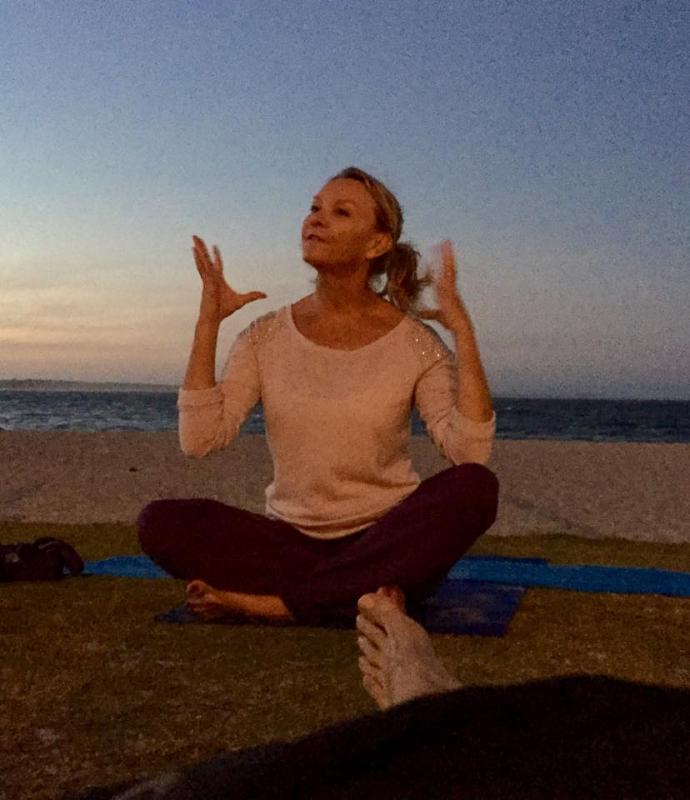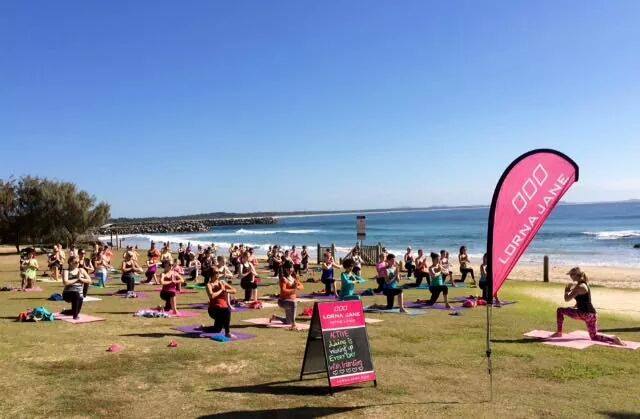Hands-on Yoga Assists in the Era of Covid
_0.jpg)
One year ago, I was to present a workshop to yoga teachers about hands-on yoga assisting during classes. At the time, yoga teachers had stopped offering these in class due to Covid regulations and safe practices.
As the virus briefly waned, teachers and studios contemplated offering assists again, which is why this studio wanted to offer a workshop. Teachers were out of practice and some new teachers had never put assists into practice at all.
I explained to the studio owner that although I used to offer lots of hands-on assists in my classes (over fifteen years teaching), the past few years for many different reasons (not just Covid) I now offered only rare assists. I explained that I was happy to offer a workshop that discussed the reasons I now rarely offered assists, as well as demonstrating to the teachers the assists I do occasionally offer when required.
To my surprise the studio owner gleefully replied, “I knew you were the right person for this workshop.” So, I excitedly created the workshop for fellow yoga teachers and then… we went into a two-week lockdown that then turned into one month. Eventually, like many yoga studios across the country, this studio folded due to the strain Covid put on the business.
A year has passed, and students have fluctuated in and out of studios however, I still haven’t offered hands-on yoga assists except in the rarest of cases. We have also endured a long, cold and wet winter which saw the increase of Covid infections again as well as every other virus known to man and ones we haven’t heard of for some time.
As spring is just around the corner and studios begin to fill again it had me pondering what will be the new normal in the world of yoga and hands-on assists. Although some students really miss getting this personalised attention and may wish to receive a tender touch again, it is important to consider why they want this kind of practice and why a teacher may also want to offer it.
So, I thought it relevant to bring the topic to the table again and express why I believe Covid was the catalyst for the collapse of the comforting caress.

When considering presenting a workshop on assisting one year ago, I spent time contemplating the purpose, what information I felt was important to impart to students, how to guide them to hear their inner educator or guru, to absorb what resonated and release what didn’t. For them to consider, if they are acting on outdated teaching or beliefs and if they needed to be released or updated as well. So, following are excerpts from the workshop that may encourage enquiry and start a conversation.
Purpose: to encourage you to enquire why, and why not you want to assist students in class (what is your motivation). Consider where the industry is at in regards with assisting these days and seeking permission.
Assisting Considerations (from my personal experience):
- Delivery: Some styles dictate that the class is taught using primarily verbal cues (stand and verbally deliver), so the teacher can see exactly what the student/s are doing. Is this how you were taught to teach & do you still feel this is effective for all students?
- Mirror Demonstrating: Students in gyms are used to instructor’s mirror demonstrating. In this way you can face the students and demonstrate whole sequences and see exactly what the students are doing. It is generally easier for the student to follow left & right. This technique is also beneficial for other mediums like online/zoom classes. I have been personally teaching this way for a decade as I find it extremely beneficial and you can still see your students. Why hasn't more of the yoga world embraced this tecnique?
- Learning Styles: Students have different learning styles…auditory, visual & kinesthetic. As a teacher do you recognize, allow and support these individual learning styles to make yoga accessible to all?
- Auditory Learners learn best through their sense of hearing, so they may prefer the audible cues.
- Visual Learners learn best when their sense of sight is engaged. They are going to prefer demonstrating (preferably mirror), as are those who are hard of hearing or need to lip read.
- Kinesthetic Learners are the most physical of all the learning styles, absorbing information best through touch, movement and motion. They may really get into assists where you can physically explain alignment when they struggle with verbal and/or audible cues. So, Mirror Demonstrating with Audible Cues and occasional Physical Assists when really needed could be a perfect teaching mix. - Yoga Styles: Core Strength Vinyasa (CSV) by Sadie Nardini. Sadie trained with Leslie Kaminoff who is an internationally recognized specialist with four decades' experience in the fields of yoga and breath anatomy. He is a leading yoga anatomy guru, teaching schools and training programs around the world. CSV was based on Leslie’s anatomy theory and believes in setting up poses from the ground up by unfurling like a fern instead of coming up in a more linear fashion like traditional yoga does. In this way it is believed you come up in optimal alignment, with very little verbal adjustment cues needed, which means fewer physical assists are generally needed.
- Anatomy: Latest yoga anatomy teachings inform us of differences in our skeletal structure and that one pose doesn’t fit all. Many students have abnormalities, injuries etc. so we need to be very careful when adjusting students’ bodies! Even very mobile students don’t always need to be guided deeper, they may already be at their safe limit, and we may need to honor that. Student’s bodies also change over years because of hormones, age, and injury and at times adjusting these students could be dangerous. When I was training as a Yoga Instructor a fellow student was assigned to our class to practice her assists and did a particularly forceful hands-on adjustment on me (I have slight scoliosis) and actually injured me for several months.
- Changing times and permissions: Over the last decade there has been lots of debate over whether to assist or not to assist for many different reasons (sex scandals; over-zealous, handsy teachers; students being injured; students with trauma; modalities generally requiring permission to touch someone). All of these are very valid reasons for asking permission and studios and teachers have come up with some ideas for asking permission such as raising a hand in Child’s Pose, the use of cards or online screening. However, a lot of these techniques don’t make for very inclusive classes and some students put on the spot feel uncomfortable saying no. Also, when a teacher has so much to think of in a class (structure, safety, music, lights, temperature, delivery, and philosophy), checking or remembering which students do or do not wish to be assisted as you are approaching them during a flow becomes very difficult.
- Covid-19: The pandemic saw studios and gyms close temporarily or permanently due to restrictions, class limits imposed, social distancing and no physical touching took place. This eased the spread of not just Covid but germs in general and made us more sanitary. I believe we should have a local and global awareness, limiting risk for ourselves, our loved ones and our community particularly for those who have low immunity. Covid actually taught me the importance of regularly washing my hands, sanitising, social distancing, appropriate mask wearing and isolating (particularly with Covid or the Flu). This practice has helped me in not picking up every virus going around like happened to me in the past and has made me re-think if it is in my best health interests to be regularly up close to students performing hands-on assists.
So, mirror demonstrating with audible cues and occasional physical assists when really needed could be a perfect teaching mix.

Questions to ask oneself regarding assisting:
- Are you doing it for their benefit or your own?
- Motivated by care or ego?
- Is it an act of help or potential hinderance?
- Are you acting on outdated knowledge or beliefs? If so, do they need updating?
I hope this article encourages enquiry not just for the teacher but also the student on why hands-on assists may be used less now in yoga classes even when some of humanity may be craving gentle touch or an enriching embrace. Perhaps it may spark some healthy debate.
Martine Ford




